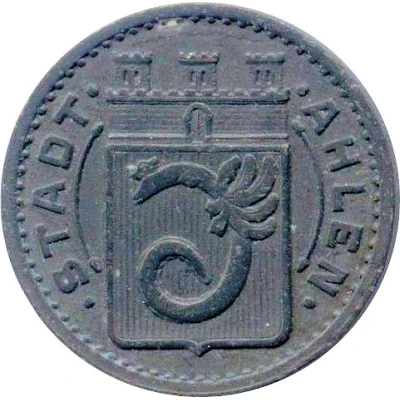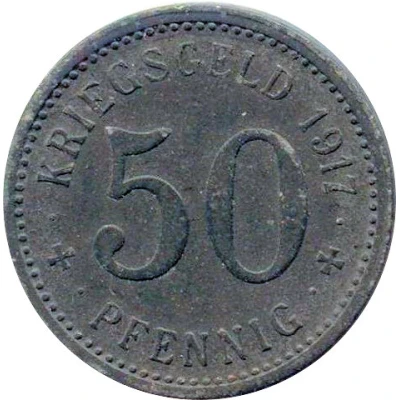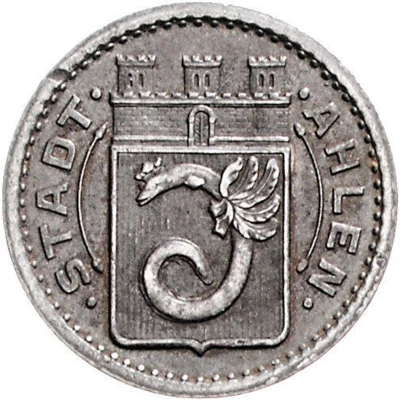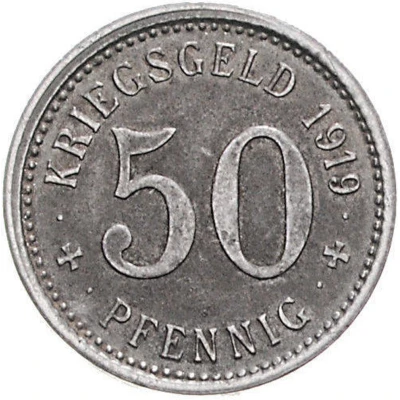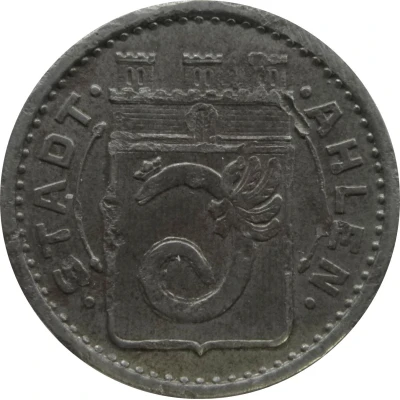
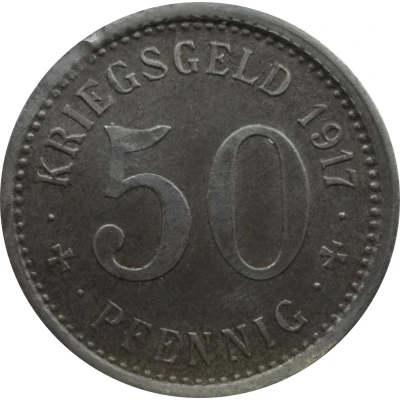

© Willem63 (CC BY-NC-SA)
50 Pfennigs - Ahlen
1917 year| Iron | 4.4 g | 22.6 mm |
| Issuer | City of Ahlen (notgeld) (Prussian province of Westphalia) |
|---|---|
| Emperor | William II (Wilhelm II) (1888-1918) |
| Type | Standard circulation coin |
| Year | 1917 |
| Value | 50 Pfennigs (50 Pfennige) (0.50) |
| Currency | Mark (1914-1924) |
| Composition | Iron |
| Weight | 4.4 g |
| Diameter | 22.6 mm |
| Thickness | 1.9 mm |
| Shape | Round |
| Technique | Milled |
| Orientation | Medal alignment ↑↑ |
| Demonetized | Yes |
| Updated | 2024-10-04 |
| Numista | N#313860 |
|---|---|
| Rarity index | 89% |
Reverse
Beaded rim, legend and date surrounding denomination centered
Script: Latin
Lettering:
KRIEGSGELD 1917
50
∙☩∙PFENNIG∙☩∙
Edge
Plain
Interesting fact
One interesting fact about the 50 Pfennigs - Ahlen 1917 coin is that it was made of iron, which was a unusual material for coins at that time, as most coins were made of gold, silver, or copper. The use of iron in the production of coins was a result of the wartime economy and the need for alternative materials due to the shortage of traditional metals. This coin is a unique example of how the scarcity of resources during World War I led to innovative solutions in currency production.
